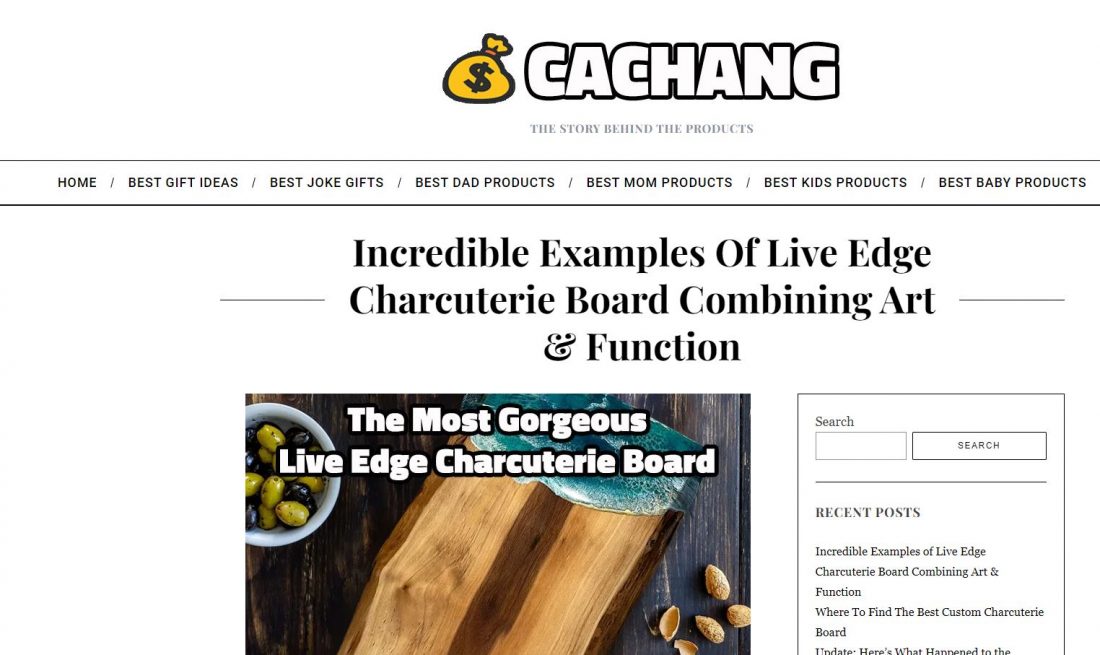
Live Edge Charcuterie Boards Now Available In The Accommodation
Carradale Cottages are always adding new and exciting features to our guests rooms. Ensuring that our guests have the most comfortable stay when they book with us. We believe that you should have a home from home experience and therefore, we add all the creature comforts that that need. We can confiorm that in the kitchens of our accommodation, we have added live edge charcuterie board with handles for entertaining. Using live edge charcuterie boards is a unique way to add an interesting, rustic look to your kitchen whilst you stay with us. However, there are a few things you should know before you begin.
Wood slabs
Adding a live edge charcuterie board to your home adds natural beauty and a rustic charm. No two boards are alike, which makes them unique. The wood types that are most popular include Walnut, Olivewood, Roasted Maple and Aromatic Cedar. These slabs are also available in different sizes.
Depending on the wood, the grain may vary. If the grain is uneven or you notice some cracks, you might want to re-look at your purchase.
If you decide to buy a charcuterie board, you can choose from a variety of woods. These slabs are great for use as a table, a display piece, a bar top or even a coffee table.
One of the best things about charcuterie boards is that you can easily make them yourself. This is a weekend project that will add a natural touch to your home. There are a number of ways to finish them, including Honey Bee’s Natural Wood Cream or Rubio Monocoat.
While you can certainly find wooden boards with an attractive design, live edge slabs can provide you with a more dramatic look. They are a beautiful piece of furniture that can be used in a kitchen, on a patio, or even in your living room.
The process of buying a live edge charcuterie board is fairly simple. You’ll have to consider the size of the slab you want, how many edges are required, and what kind of surface you’ll be using the board on.
Slight variations
Whether you’re planning to host a dinner party or simply serve your family’s favorite cheese, a live edge charcuterie board can help you achieve that coveted symmetry. Made with top quality hardwoods, these boards are built to last. Each piece comes with a hand grip for ease of mobility.
Aside from the board’s functional uses, the charcuterie board is also known for its aesthetics. These boards are carved out of beautiful woods such as East Indian Walnut, Old Growth Redwood Burl, and Roasted Maple. Each board’s design is meticulously crafted for the best possible finish.
There are many different types of charcuterie boards on the market. Some are made from non-porous hardwoods like bamboo and olive wood. Others are made from face-grain woods such as mahogany and maple. Each board has its own unique shape and figure.
Obviously, each board is crafted for its own purpose. Some are used for cutting, while others are meant to be serving trays. If you’re on a budget, you can find some good deals on charcuterie boards. There are a variety of sizes and handle styles to choose from. They’re also perfect for kitchens that don’t have a lot of counter space.
While you’re at it, you can also opt for some of the more artistically themed pieces. For example, you can order a board that features a carved out abalone shell in ocean blue epoxy.
Stabilization
Creating charcuterie boards with live edge wood is a great way to add natural beauty and rustic charm to your home. No two boards are the same. There are many different techniques to stabilize the wood, which will ensure the boards remain stable after use.
There are two main types of stabilized wood: thermally hardening and thermosetting. Thermosetting is a resin that is fully impregnated into the wood, whereas thermally hardening requires a minimal residual moisture content. This is essential for optimal stabilization.
During the stabilization process, the blanks will absorb the resin. This allows them to be drained after the evacuation. This will prevent any damage to the boards. To remove the blanks, protective gloves are used. The blanks are then dabbed with kitchen paper, which is then drained to eliminate any remaining resin.
Before attempting to stabilize the wood, make sure that the residual moisture content of the board is below 5%. If the residual moisture content is too high, the boards can crack and the drying process cannot resist tension. The process can be regulated by storing the wood for a long time. Alternatively, it can be dried in an oven for 24 hours at 104 deg Celsius.
When selecting the wood, look for large knots and cracks. If you have selected the correct material, it will be ready to be stabilized.

Sorry, the comment form is closed at this time.